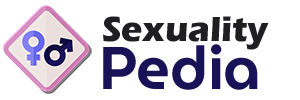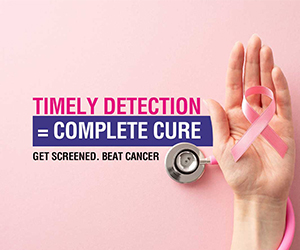Beyond Binary: Using Gender-Inclusive Language in Reproductive Health
Explore gender-inclusive approaches to reproductive health language that acknowledges diverse gender identities while maintaining medical accuracy and accessibility.

The traditional language of reproductive health has long assumed a binary understanding of gender, using terms like "women's health" and "maternal care" that, while historically standard, fail to acknowledge the full spectrum of gender identities among people who experience reproductive health needs. As our understanding of gender diversity has evolved, so too must our approach to reproductive health communication. Using gender-inclusive language in reproductive health settings isn't just about being politically correct—it's about ensuring that all people receive respectful, appropriate care that acknowledges their identity while addressing their health needs effectively.
Understanding Gender Beyond the Binary
Gender identity exists on a spectrum that extends far beyond the traditional categories of male and female. Understanding this spectrum is essential for healthcare providers, policymakers, and advocates working in reproductive health to serve all community members effectively.
Transgender men may retain reproductive organs typically associated with female anatomy and may experience menstruation, pregnancy, and other reproductive health needs while identifying as male. Non-binary individuals may have various combinations of reproductive anatomy and may experience reproductive health needs that don't align with traditional gender-based healthcare categories.
Gender-fluid individuals may experience their gender identity as changing over time, requiring healthcare approaches that can adapt to their current identity and needs. Agender individuals may not identify with any gender category while still having reproductive health needs that require appropriate medical care.
The distinction between sex assigned at birth and gender identity is crucial in reproductive health contexts. While reproductive anatomy influences certain health needs, gender identity affects how individuals experience their healthcare, what language feels affirming and appropriate, and how they navigate reproductive health decisions within their personal and social contexts.
Current Challenges in Reproductive Health Language
Traditional reproductive health language creates numerous barriers for gender-diverse individuals seeking care, often forcing them to navigate systems designed around binary gender assumptions that don't reflect their lived experiences.
Medical forms and intake procedures often require individuals to identify as either male or female, creating immediate barriers for those whose gender identity doesn't fit these categories. When transgender men or non-binary individuals seeking reproductive health services must select "female" on forms, they may experience dysphoria and alienation before their healthcare visit even begins.
Healthcare provider training has traditionally focused on "women's reproductive health," potentially leaving providers unprepared to serve transgender and non-binary patients with sensitivity and competence. This training gap can result in uncomfortable interactions, inappropriate questions, or inadequate care for gender-diverse patients.
Insurance systems and healthcare coding often rely on gender markers that may not align with patients' identities, creating barriers to coverage and appropriate care. When insurance systems assume that only "females" need certain reproductive health services, transgender men and non-binary individuals may face coverage denials or bureaucratic obstacles.
Principles of Gender-Inclusive Language
Developing effective gender-inclusive language for reproductive health requires understanding core principles that prioritize accuracy, inclusivity, and respect while maintaining medical precision and clarity.
Person-first language focuses on the individual rather than making assumptions based on anatomy or perceived gender. Instead of "pregnant women," inclusive language might use "pregnant people" or "pregnant individuals," acknowledging that not all people who can become pregnant identify as women.
Anatomy-specific language describes bodily functions and structures without making gender assumptions. Terms like "people with uteruses" or "individuals who menstruate" focus on the relevant anatomy while avoiding assumptions about the gender identity of people who have these experiences.
Function-based descriptions emphasize what the body does rather than who is assumed to experience certain functions. This approach might refer to "people who can become pregnant" or "individuals experiencing menopause" rather than assuming these experiences belong exclusively to women.
Menstruation and Menstrual Health
Menstrual health represents one of the most important areas for gender-inclusive language development, as menstruation is experienced by people across the gender spectrum, not exclusively by cisgender women.
Traditional menstrual health education often refers to "girls and women" experiencing menstruation, but inclusive language acknowledges that some transgender men, non-binary individuals, and other gender-diverse people also menstruate. Using terms like "people who menstruate" or "menstruating individuals" creates more inclusive educational materials and healthcare discussions.
Menstrual products and facilities require inclusive approaches that acknowledge diverse users. Rather than "feminine hygiene products," inclusive language might use "menstrual products" or "period supplies." Restroom facilities should accommodate all people who menstruate, regardless of their gender identity.
Workplace and educational policies about menstrual accommodation benefit from inclusive language that doesn't assume only women need these supports. Menstrual leave policies, for example, should be written to include all employees who experience menstruation.
Pregnancy and Prenatal Care
Pregnancy care represents perhaps the most challenging area for developing gender-inclusive language, as traditional "maternal" health frameworks must evolve to serve transgender men and non-binary individuals who become pregnant.
Prenatal care language can shift from "expectant mothers" to "expectant parents" or "pregnant individuals," acknowledging that not all pregnant people identify as mothers or women. This change requires careful consideration of when gender-specific language remains appropriate and when inclusive alternatives better serve diverse families.
Birth planning and labor support must accommodate diverse gender identities and family structures. Some pregnant transgender men may want to be referred to as "father" rather than "mother," while some non-binary individuals may prefer gender-neutral parenting terms.
Postpartum care requires inclusive language that acknowledges diverse experiences of early parenthood. Rather than assuming all birthing people identify as mothers, inclusive language might refer to "new parents," "birthing parents," or use the specific terms preferred by individual patients.
Lactation and chest-feeding present specific language considerations, as some transgender men and non-binary individuals may prefer "chest-feeding" to "breastfeeding" while still wanting to provide human milk to their infants. Healthcare providers should be prepared to use the terminology that feels most comfortable for each individual patient.

Contraception and Family Planning
Family planning services require inclusive language that acknowledges diverse relationships, family structures, and reproductive goals while avoiding assumptions about gender roles or sexual orientation.
Contraceptive counseling benefits from inclusive language that doesn't assume heterosexual relationships or traditional gender roles. Rather than discussing "women's contraceptive choices," providers might focus on "contraceptive options for people who can become pregnant."
Emergency contraception access should use inclusive language that acknowledges all people who might need these services, including transgender men and non-binary individuals who may not identify with traditional "women's health" frameworks.
Sterilization procedures require inclusive language that respects individuals' reproductive autonomy regardless of their gender identity. This includes acknowledging that some people seeking sterilization may be motivated by gender dysphoria related to reproductive capacity rather than traditional family planning considerations.
Fertility and Reproductive Technology
Assisted reproductive technologies and fertility services must develop inclusive language that serves diverse families and individuals seeking to build families through various means.
Fertility preservation for transgender individuals requires inclusive language that acknowledges the unique considerations faced by people who may want to preserve reproductive capacity before gender-affirming medical treatments. This includes using appropriate terminology for gamete storage and future family building options.
Third-party reproduction, including egg donation, sperm donation, and surrogacy, benefits from inclusive language that acknowledges diverse family structures and parenting roles. Traditional language assuming heterosexual couples may not serve LGBTQ+ families or single parents using these services.
Pregnancy loss support requires inclusive language that acknowledges diverse experiences of grief and loss while respecting individuals' gender identities and family structures. Not all people who experience pregnancy loss identify as women or mothers, and support services should accommodate this diversity.
Healthcare Provider Training and Education
Implementing gender-inclusive language in reproductive health requires comprehensive training for healthcare providers that goes beyond simple terminology changes to address underlying attitudes and assumptions.
Medical education curricula should integrate gender-inclusive approaches throughout reproductive health training rather than treating LGBTQ+ health as a separate, optional topic. This integration helps future providers develop inclusive communication skills as part of their standard professional competencies.
Continuing education for practicing providers should address both language use and the underlying concepts of gender diversity that inform inclusive care approaches. This education should include practical skills for navigating challenging conversations and situations with sensitivity and competence.
Cultural competency training should address the intersection of gender identity with other aspects of diversity, including race, ethnicity, religion, and disability status, recognizing that patients' experiences of gender and reproductive health are shaped by multiple aspects of their identity.
Policy and Systems Change
Creating truly inclusive reproductive health environments requires changes at the policy and systems level that go beyond individual provider education to address structural barriers to inclusive care.
Electronic health records systems should accommodate diverse gender identities and chosen names while maintaining the medical information necessary for appropriate care. This includes options for recording both legal information required for insurance and billing purposes and identity information needed for respectful patient interaction.
Insurance policies should be reviewed and updated to ensure that coverage for reproductive health services doesn't rely on gender markers that exclude transgender and non-binary individuals from necessary care. This may require advocacy for policy changes at institutional and legislative levels.
Healthcare facility policies should address inclusive restroom access, intake procedures, and staff training requirements that support welcoming environments for all patients seeking reproductive health services.
Community Engagement and Feedback
Developing effective gender-inclusive language requires ongoing engagement with transgender, non-binary, and gender-diverse communities to understand their experiences and preferences in reproductive health settings.
Community advisory groups can provide valuable input about language preferences while helping healthcare organizations understand the barriers and facilitators to accessing reproductive health services for gender-diverse individuals.
Patient feedback mechanisms should specifically address experiences of inclusivity and respect in reproductive health settings, helping organizations understand whether their inclusive language efforts are having the intended impact on patient experiences.
Collaboration with LGBTQ+ organizations and advocacy groups helps healthcare providers stay current with evolving language preferences while building relationships that support better health outcomes for gender-diverse communities.

Addressing Resistance and Concerns
Implementing gender-inclusive language in reproductive health often encounters resistance from various stakeholders who may have concerns about changes to familiar terminology and practices.
Medical accuracy concerns can be addressed by emphasizing that inclusive language maintains scientific precision while expanding accessibility. Gender-inclusive language doesn't change medical facts but rather acknowledges the diverse identities of people who experience various reproductive health needs.
Religious and cultural objections require respectful dialogue that seeks to find common ground in providing compassionate care to all individuals while acknowledging diverse perspectives on gender and sexuality.
Staff concerns about making mistakes or using inappropriate language can be addressed through comprehensive training, clear guidelines, and creating supportive environments where learning and growth are encouraged rather than perfection demanded.
International and Cross-Cultural Considerations
Gender-inclusive language in reproductive health must navigate diverse cultural contexts and international variations in gender understanding and expression.
Global health initiatives should consider how gender-inclusive approaches can be adapted to different cultural contexts while still promoting inclusive care for gender-diverse individuals worldwide.
Translation and interpretation services require careful attention to gender-inclusive language across different languages and cultural contexts, as literal translations may not convey the intended inclusivity or respect.
Cross-cultural competency in gender-inclusive reproductive health requires understanding how different cultures conceptualize gender while maintaining commitment to providing respectful care for all individuals regardless of their gender identity.
Technology and Digital Health
Digital health platforms and technologies used in reproductive health must incorporate gender-inclusive design principles to ensure accessibility and usability for all users.
Health apps focused on menstrual tracking, fertility monitoring, and pregnancy support should use inclusive language and accommodate diverse user identities rather than assuming all users identify as women.
Telehealth platforms should include options for recording and using appropriate names and pronouns while ensuring that all healthcare team members have access to this information for respectful patient interactions.
Online health education resources should use inclusive language and provide information relevant to diverse gender identities while maintaining medical accuracy and accessibility.
Future Directions and Evolution
Language continues to evolve, particularly around gender identity and expression, requiring ongoing attention to emerging terminology and changing community preferences in reproductive health contexts.
Research on gender-inclusive healthcare communication continues to provide evidence about effective approaches and their impact on health outcomes for gender-diverse populations, informing best practices and policy development.
Professional organizations and medical societies increasingly recognize the importance of gender-inclusive language in reproductive health, developing guidelines and standards that support inclusive care practices.
The future of reproductive health lies in creating systems and approaches that serve all people with reproductive health needs, regardless of their gender identity, through language and practices that honor diversity while maintaining the highest standards of medical care.
Moving beyond binary language in reproductive health represents a fundamental shift toward more inclusive, equitable healthcare that recognizes and celebrates the full spectrum of human gender diversity while ensuring that all people receive the reproductive health services they need with dignity and respect.











